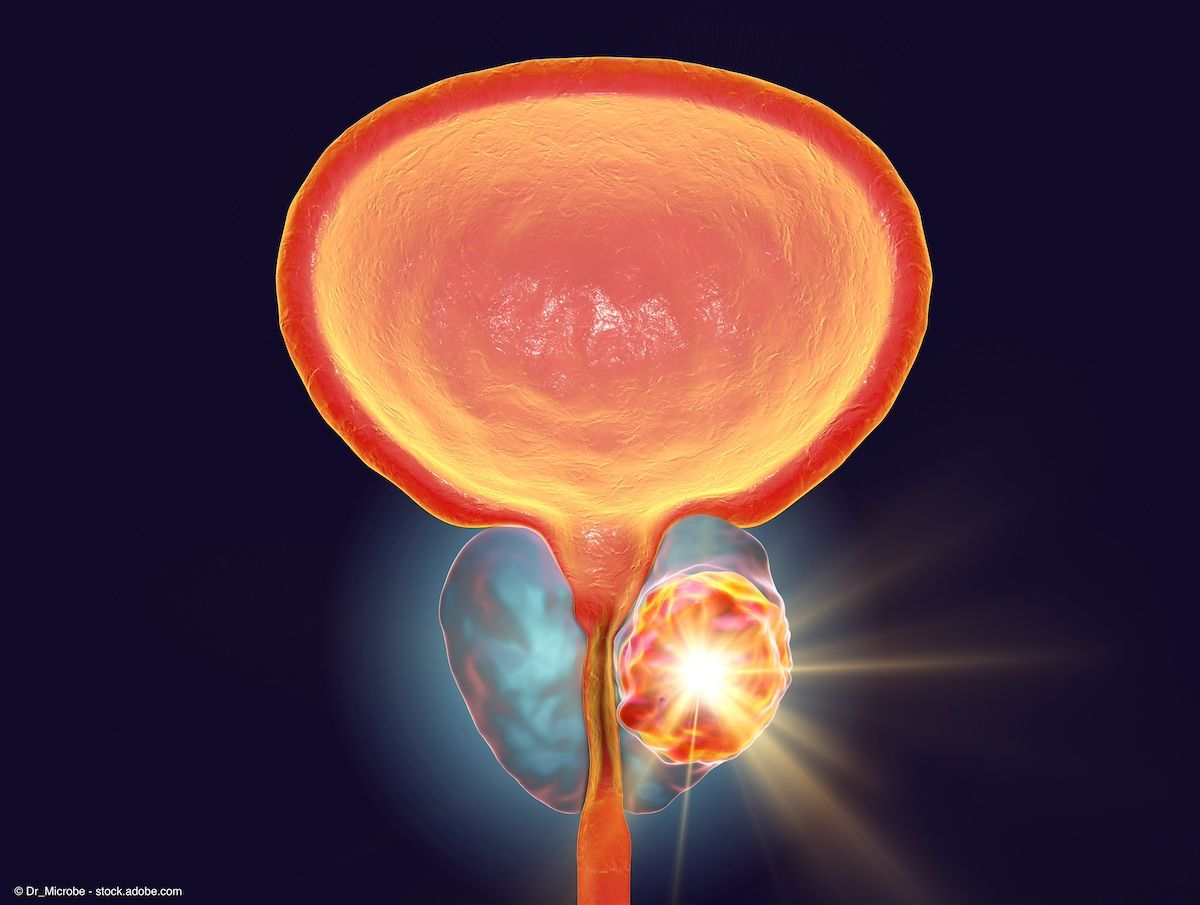News
Article
PACE-B trial: Five-fraction SBRT noninferior to conventional radiotherapy in prostate cancer
Author(s):
Key Takeaways
- Five-fraction SBRT showed noninferiority to conventional radiotherapy in localized prostate cancer, with 95.8% of patients free from failure at five years.
- SBRT offers a shorter treatment duration, potentially benefiting healthcare systems and patients, despite higher genitourinary toxicity compared to conventional radiotherapy.
At 5 years, 95.8% of patients in the SBRT arm were free from biochemical or clinical failure compared with 94.6% of patients in the control radiotherapy arm.
Five-fraction stereotactic body radiotherapy (SBRT) demonstrated a comparable rate of biochemical and clinical failure vs conventionally or moderately hypofractionated radiotherapy regimens in patients with localized prostate cancer, according to data from the phase 3 PACE-B trial (NCT01584258), which were published in the New England Journal of Medicine.1
Specifically, 95.8% of patients (95% CI, 93.3%-97.4%) in the SBRT arm were free from biochemical or clinical failure at 5 years compared with 94.6% of patients (95% CI, 91.9%-96.4%) in the control radiotherapy arm (HR, 0.73; 95% CI, 0.48-1.12; P = .004 for noninferiority). This met the trial’s end point on noninferiority, with a set critical hazard ratio of 1.45. In total, 26 patients in the SBRT arm and 36 patients in the control group experienced biochemical or clinical failure during the study period.
Nicholas van As, MD, MBBCH

“Standard radiation treatment is already highly effective and is very well tolerated in people with localized prostate cancer, but for a health care system and for patients, to have this treatment delivered just as effectively in 5 days as opposed to 4 weeks is hugely significant,” said lead author Nicholas van As, MD, MBBCH, medical director and consultant clinical oncologist at The Royal Marsden NHS Foundation Trust, and professor in precision prostate radiotherapy at The Institute of Cancer Research, London, in a news release on the findings.2
Regarding the trial secondary end points, 10 patients in the SBRT arm and 19 patients in the control arm commenced androgen deprivation therapy (ADT) during the study (HR, 0.55; 95% CI, 0.26-1.20). Further, 46 patients in the SBRT arm and 33 patients in the control arm died during follow-up (HR, 1.41; 95% CI, 0.90-2.20). Of these, 2 in each arm were attributed to prostate cancer, with 28 attributed to other primary cancers.
Five-fraction SBRT also demonstrated a higher incidence of genitourinary toxicity, but similar rates of gastrointestinal toxicity, compared with control radiotherapy.
Late Radiation Therapy Oncology Group (RTOG) genitourinary toxic effects of grade 2 or higher were experienced by 26.9% of patients (95% CI, 22.8%-31.5%) in the SBRT cohort vs 18.3% of patients (95% CI, 14.8%-22.5%) in the conventional radiotherapy cohort (P < .001). Additionally, 10.7% of patients (95% CI, 8.1-14.2) in the SBRT cohort and 10.2% of patients (95% CI, 7.7-13.5) in the conventional radiotherapy cohort experienced late RTOG gastrointestinal toxicity of grade 2 or higher.
There was no significant difference between the 2 arms regarding urinary and bowel symptoms from 2 to 5 years, with stable rates reported across both treatment groups.
In total, the international, open-label, randomized, controlled trial enrolled 874 patients with low- or intermediate-risk localized prostate cancer across 38 centers in the United Kingdom, Ireland, and Canada. The median age of participants was 69.8 years, and the median prostate-specific antigen (PSA) level was 8.0 ng/mL. According to the authors, baseline characteristics were well-balanced between both arms.
To be eligible for enrollment, patients needed to have a Gleason score of 3+4 or less and a PSA level of no more than 20 ng/mL. ADT was not permitted in the trial.
Patients enrolled in the study were randomly assigned 1:1 to receive SBRT (n = 433) or conventionally or moderately hypofractionated radiotherapy (n = 441). Those in the SBRT arm underwent radiotherapy at 36.25 Gy for 5 fractions with the CyberKnife device over the course of 1 to 2 weeks. Patients in the control arm underwent radiotherapy at either 62 Gy for 20 fractions or 78 Gy for 39 fractions over the course of 4 to 7.5 weeks.
The primary end point for the trial was freedom from biochemical or clinical failure. Secondary end points included commencement of ADT, overall survival, and clinician- and patient-assessed adverse effects.
The median follow-up was 74.0 months among all patients.
van As concluded in the news release, "To be able to sit with a patient and say, 'We can treat you with a low toxicity treatment in 5 days, and your chance of keeping the cancer at bay for 5 years is 96%,' is a very positive conversation to have. We expect our trial to be practice changing and people with intermediate risk prostate cancer should be given the option of SBRT as an alternative to conventional radiation or prostate surgery."2
References:
1. van As N, Griffin C, Tree A, et al. Phase 3 trial of stereotactic body radiotherapy in localized prostate cancer. N Engl J Med. 2024 Oct 17;391(15):1413-1425. doi:10.1056/NEJMoa2403365
2. New England Journal of Medicine study reaffirms five session radiation treatment provides comparable rates of cancer control, tolerability and sexual functioning to conventional radiotherapy treatment in men with localized prostate cancer. News release. Accuray Incorporated. Published online and accessed October 17, 2024. https://www.prnewswire.com/news-releases/new-england-journal-of-medicine-study-reaffirms-five-session-radiation-treatment-provides-comparable-rates-of-cancer-control-tolerability-and-sexual-functioning-to-conventional-radiotherapy-treatment-in-men-with-localized-prostat-302278841.html
Newsletter
Stay current with the latest urology news and practice-changing insights — sign up now for the essential updates every urologist needs.

















